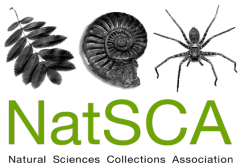The history of the dried Mola mola (Linnaeus, 1758) and Mola tecta (Nyegaard, et al., 2017) specimens in the collection of Naturalis Biodiversity Center, Leiden
This study provides an overview of the historical preparation techniques used on the Mola mola and Mola tecta specimens in the collection of the Naturalis Biodiversity Center, Leiden. The current state of the specimens is examined to ascertain these techniques, and observations are set against the contextual framework of a selection of 19th century taxidermy handbooks. The specimens came into the collection in three periods (1826-1836, 1889-1896 and 1940) and the techniques used to prepare them are compared to establish a standard for each period. Archival material and publications on these specimen have been used to gather background information on how these specimens were collected, in order to place them in their historical context. It can be concluded that the preparation techniques are very similar intra-period, and were certainly based on instructions from the museum and the experience of one (team of) preparator(s). The changing techniques from the early to the late 19th century can be attributed to changes in taxidermy practices as well as the fact that these specimens were larger since they were collected locally. This has opened up further possibilities for study, including a more thorough physical examination using modern technology and comparative studies between the techniques described here and other specimens in the Naturalis collection to gather more information about 19th century preparations in general.
